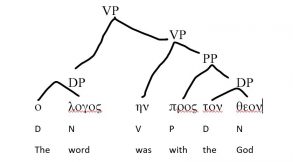Notice the verbs in Matt 5:7-8. In 5:7 there are three present imperatives followed by three future indicatives. In 5:8 there are three present participles followed by three present indicatives.
The verbs in the present imperative and the present participle morphological forms are all continual (imperfective) aspect. Both the imperfective verbs and the present participles indicate ongoing action. Both describe a situation where people keep on asking, keep on seeking and keep on knocking.
The verbs in the future indicative and present indicative morphological forms all describe a simple (aoristic) aspect. One is in future time and one is in present time. Both morphological forms (present and future indicatives) describe a situation where people receive, find, and have opened doors. This simple action does not describe continuous (imperfective) action, though it might be continuous. This simple action does not describe finished (perfective) action, but it might be perfective. The aoristic aspect is the simple default aspect that does not comment on the kind of action.
Some, however, claim that the present indicative is continuous (imperfective) aspect. Here, however, the present indicative morphological form is used in parallel with the future indicative, indicating both are aoristic. Other places we find the aorist indicative used in parallel with the so called “historic present” providing support that the aorist indicative and present indicative morphological forms have the same aspect.
My point is this, the three morphological forms: aorist indicative, present indicative, and future indicative, all have the same simple (aoristic) aspect. The three differ in time, past, present and future. The traditional names for these morphological forms are, therefore, semi accurate. The aorist indicative is rightly named for its aspect. The present and future indicatives are both rightly named for their time.
Of course the Koine Greek verb is more complex than the indicative mood. In the imperative, the options are the present and aorist morphological forms that convey imperfective and aoristic aspect. There is no time in the imperfective.
Likewise, in the Koine Greek participle, there are present, perfect, aorist, and a few future morphological forms. These are imperfective, perfective and the aorist and future are both aoristic, the aorist happening prior to the main action and the future happening subsequent to the main action.
All this indicates that the author has a choice about what aspect to use and the choice is meaningful. The author chose the continual (imperfective) aspect for the imperative and participles indicating asking, seeking, knocking. The author chose the aoristic morphological forms to communicate the consequence of these continuous efforts–they will receive, find, and doors will open.
Matthew 5:7-8 provides a very nice example of the continual (imperfective) and simple (aoristic) aspects in use in both present and future time.
#GreekBible#VerbalAspect#Matthew5:7-8#KoineGreek#New Testament Greek
Views: 230
